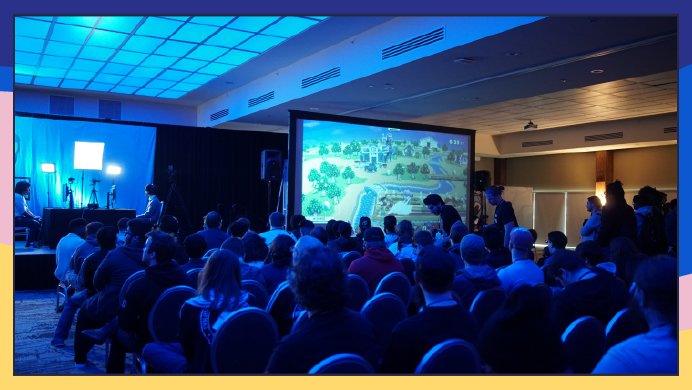In a recent blog article, How to Adapt Your Microcontent to Your Employees’ Social Needs, we discussed the importance of addressing social needs at work, and how you can use your microcontent to both educate and to engage/build community.
In this article we’re going to narrow the focus specifically on the medium of learning videos as microcontent you can adapt to support social learning. As we explained previously, social learning is most generally defined as learning with and through others. Social learning theory posits that we learn by observing others’ behavior and the consequences of that behavior. Then we think about, process, and imitate that behavior. We receive feedback which reinforces or diminishes our new behavior.
Why use learning videos?
Practical
It is not always possible, safe, or efficient to observe performance firsthand or in person. Video is the next best thing to being there. Want your learners to see the striations in the rock formations outside of Madrid? Need your techs to be able to diagnose safety situations that could be life-threatening? A learning video can fulfill those needs without travel or putting anyone in danger. It still provides the valuable social learning of watching someone perform behaviors and the consequences of those behaviors – but in a practical way.
Consistent
We had a client with an elaborate mentorship program where new hires were assigned a senior field person to show them the ropes for the first several months on the job. Once they mastered the various procedures, eventually they would be called upon to mentor others. The organization was experiencing significant quality and safety issues even though their written procedures were very clear about the requirements. In our analysis, we discovered that the mentors were, in fact, passing along various short cuts and unsafe practices rather than teaching the procedures as written. This was a clear case of the wrong kind of social learning!
A well-designed learning video can provide consistency in how a procedure is taught. The content remains the same no matter how many times it’s viewed. In situations like this, especially when safety is involved, that “sameness” is crucial. Such videos can also serve as a refresher for your more experienced employees.
More affordable than ever
In the world of home-produced YouTube videos, our tolerance for lower production-value content has really gone up. Add to that how much improved camera technology has become, and it is very affordable to include video in your blended learning solutions. If you need top-quality, studio-produced video or full custom animation, it can still get quite expensive, but you have many options to consider. You can create valuable microcontent by leveraging built-in webcams, using screen capturing software while an expert gives a system demonstration, or even using your phone camera to capture a leader speaking passionately about an important initiative. We like to hear from and watch our peers. It is a powerful method of social learning.
Expected
Microlearning based on social learning elements is more and more expected by audiences of all ages and geographic locations. Learners are becoming accustomed to using learning videos in many places in our lives. Rather than read through the user manual, we search for the how-to video to figure out how to do all sorts of things. If you keep your learning videos short and easy to use, they will often be the first choice for learners. These days, short demonstration or explainer videos are the norm in the workplace.
Personalized
One of the disadvantages of learning videos is that once created, they are static. Updates or customizing require a bit of work and may not even be possible. That is why it’s important to think about your audience and content when creating videos. How can you balance keeping it general enough to be sustainable long-term with customization to really appeal to your specific audience? Plan your videos in advance and avoid mentioning dates to prolong the lifecycle. On the other hand, make the learning as personal as possible. Use people and locations that are identifiable. Refer to case studies or scenarios that are familiar to the audience. Use conversational language to help learners feel they are part of the experience. All these elements of personalization help support the social learning aspects by creating a sense of belonging and building community. Personalized microlearning videos are better received and more effective than off-the-shelf generic videos.
Repeatable
Another fantastic benefit of creating microlearning videos which include social learning elements is that you can pause, review, and replay as much as required. Your team might watch the whole video together in a meeting then discuss it. That’s powerful social learning, and it might be enough for some to master the skill. For others, though, once back on the job, they might require a refresher. They can re-watch as often as necessary.
Usable at many points along the learning cycle
That brings me to my next point. Learning videos can be used at many different points throughout the learning cycle. Perhaps you have a big learning initiative coming up in your organization. You might send out a short learning video as a bit of a teaser, a sneak peek of what is to come. Or perhaps you’ll teach the new content through a series of microlearning videos. As we just described, they make a great refresher after the fact while learners are still cementing new behaviors.
Mobile
A last great reason to use microlearning videos is that they are so flexible! They can be delivered on many devices wherever and whenever your learner needs them. This can be a challenge for proprietary or strictly confidential content, but the benefits of having learning at your fingertips are many. The social learning aspect of mobile microlearning videos is enhanced if learners can comment, share, or provide feedback about the videos they are watching and finding valuable. Be sure your platform allows for these capabilities in addition to simply hosting the videos.
There are some disadvantages with using microlearning videos: they are tougher to update than a PowerPoint presentation, the files they generate can be sizable and difficult to store or send (all the more reason to keep them truly micro), and they can be more complicated to search for in your Learning Management System (so be sure to use lots of relevant key words to help your learners find them when needed). But the benefits of using microlearning videos with social learning elements clearly outweigh the down sides.
So when you are considering using video in your blended learning solutions, explore using microlearning videos with social learning elements to help transfer knowledge and build a strong learner community.







